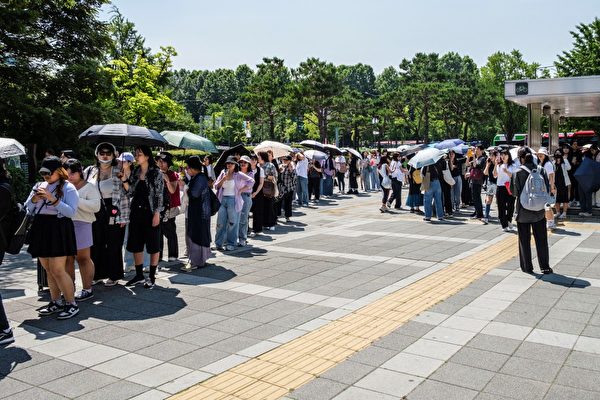On Wednesday, June 19th, South Korea experienced a heatwave in many regions. By 3:00 pm on that day, several areas across the country broke the record for the highest temperature in June.
According to reports from “The Korea Herald” and the Korean News Agency, South Korea has been experiencing sunny days with strong sunlight and prevailing southwestern winds. The mid-June weather this year has been hotter than typical summers.
As of Wednesday afternoon, the highest temperature in the city of Gyeongju, North Gyeongsang Province, reached 37.7 degrees Celsius, setting a new record for June since 2010. Gwangju recorded 37.2 degrees Celsius, the highest since 1939. Daegu reached 36.1 degrees Celsius, breaking the record set in June 2022 of 35.7 degrees. Seoul recorded 35.6 degrees Celsius, matching the highest temperature set on June 25, 1958.
Seoul issued its first heatwave warning of the year at 10:00 am on Wednesday. Due to high pressure and warm westerly winds, temperatures in many parts of the country are higher than usual. Currently, 92 regions have issued heatwave warnings. In South Korea, a heatwave warning is issued when the maximum apparent temperature is expected to reach 33 degrees Celsius or higher for two consecutive days or more.
According to data from the Automatic Weather Station (AWS), the temperature in Hayang-myeon, Gyeongsan City, North Gyeongsang Province, soared to 39 degrees, and in Dongseong-dong, Icheon City, Gyeonggi Province, the temperature reached 38.8 degrees.
The Korean Meteorological Administration’s forecast released on May 23 predicted that this summer would be hotter than usual, with rainfall levels similar to or higher than the averages.
The forecast indicates a 50% chance that temperatures in June and August will surpass the average levels of the past 30 years, with a 40% likelihood for July. In terms of precipitation, there is a 40% chance that rainfall in July and August will exceed the 30-year average.

